While it causes debilitating pain, foot binding remains a common practice in China. Chinese women have remained devoted to this tradition which is painful even to think about, and it begs the question – what is it, and what is foot binding still practiced?
Note that foot binding was also used as a way of distinguishing girls belonging to the upper class in society from all other girls and pretty much everyone else. Later on, foot binding was used widely as a way for the girls belonging to the lower classes to improve their prospects in society.
What Is Foot Binding In China
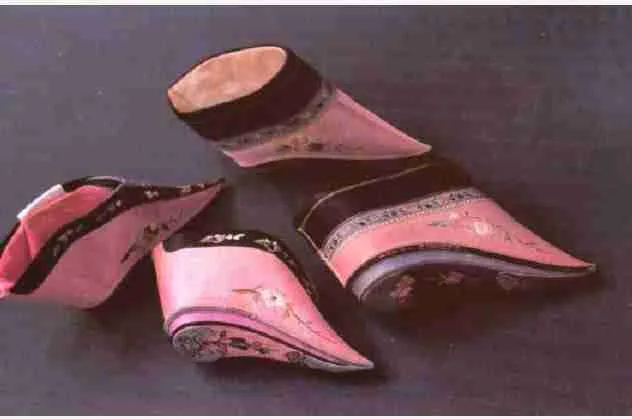
Foot binding definition:It is believed that foot binding was started by a dancer known as Yaoniang, who used to perform at the dynasty’s court during the rule of the Tang Dynasty. At the time, the practice was common with the Turkic dancers who had their feet bound during performances in the 10th century CE. These were exquisite dancers, and they were known not just for their super-small feet but also their bow shoes, whose toes were upturned.
Foot binding is a practice that dates back to the Tang Dynasty, and it has to do with everything the term suggests – the painful breaking and tightly binding of the feet of young girls with the intention of changing the size and the shape of the girls’ feet. The resultant bound or altered feet after foot binding were called lotus feet, and the shoes made for these altered feet were called the lotus shoes. It was initially practiced on young girls where it was used to restrict the girls’ normal growth, making these girls have very small feet. The driving force and reason for the practice have to do with the belief that small feet were attractive. The matter of attractiveness took precedent, despite the fact that the process was permanent and very painful.
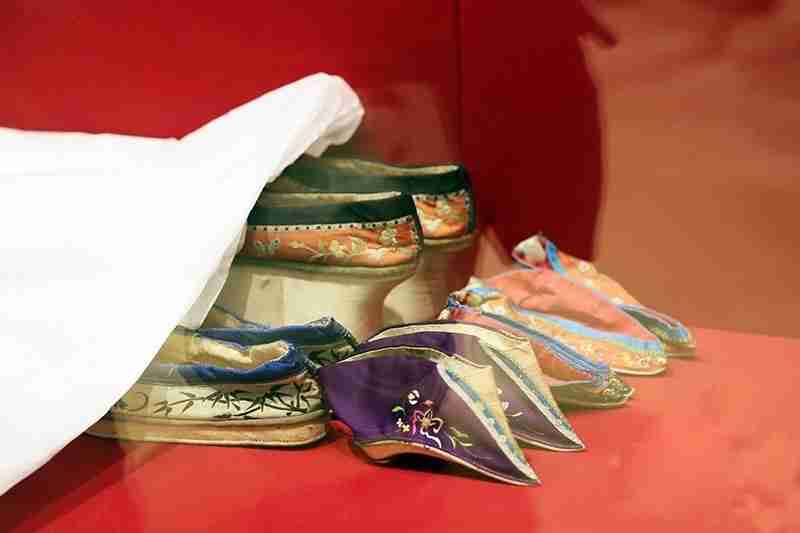
When Did Foot Binding Start And End?
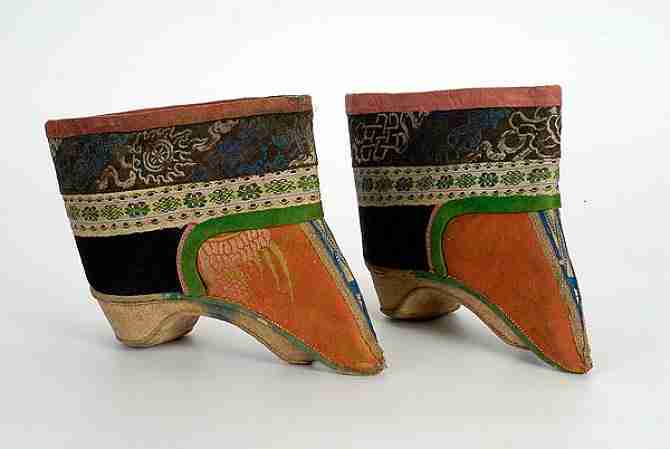
Foot binding was quite prominent until early on the 20th century. And according to historical records that feature the very first mentions of foot binding, the practice was active in the Tang Dynasty court in Nanking between 937 and 975CE.
The practice seems to have had a huge social impact on Chinese women around the late 13th Century. But there are no real or clear lines in regards to the matter, and the practice along with the prevalence of foot binding seems to have been highly variable over time and with different social classes and religions. But as mentioned above, it appears to have originated with the foot dancers, particularly in the 10th Century China or the 5 Dynasties and 10 Kingdoms period. Though the adoption of the practice was gradual, the elite soon popularized the practice during Song Dynasty’s reign. And by the time the Qing Dynasty came to power between 1636 and 1912, the foot-binding practice had spread to the lower Chinese social classes.
Emperor Manchu Kangxi attempted to ban foot binding in 1664, but he didn’t succeed because, in some parts of China, girls with lotus feet had higher prospects of getting married. According to estimates, between 40 and 50% of the Chinese women in the 19th century had their feet bound, and 100% of the upper-class women had bound feet.
How Did Foot Binding Start?
It all started with the dancer known as Yaoniang who would perform at the Tang Dynasty’s court – she not only had small feet but a
It was soon after taken up by the upper class, given the male’s erotic fascination with the shape and the size of the feet of the dancers. It turned into a way for upper-class girls to increase their marital prospects, and the lower-class girls would also go through the same many years later.
How Long Was Foot Binding Practiced In China?
It started in the 10th Century CE, up until early in the 20th century CE.
Why Did Foot Binding Start?
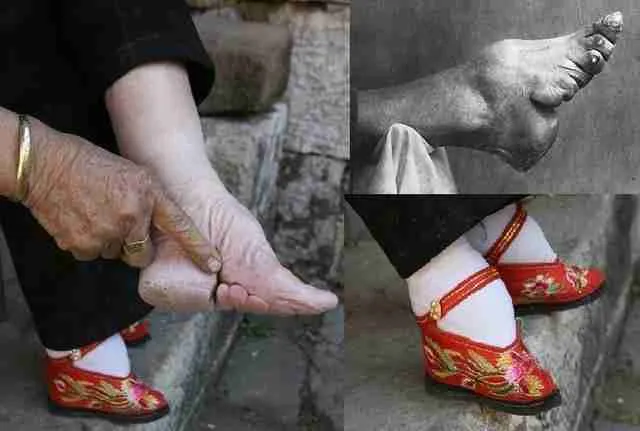
why binding feet in ancient china? It started because males believed that they’d derive a higher level of sexual satisfaction by marrying girls who had small, bound feet.
Like the tiny waist from Victorian England, the small foot was believed to represent the height of femininity and female refinement. And so, families believed that it was the only way for their daughters to be married. The small foot was seen as the best form of currency that would guarantee the attainment of upward mobility in society. So, there was even a gold standard for the small feet that were put in place, and it stated that the most desirable bride had a 3-inch foot or the golden lotus. But it didn’t stop there, with the 4-inch foot considered the silver lotus, and the 5-inch or longer feet dismissed and regarded as iron lotuses. So, girls with the iron lotuses had dim or absolutely no marriage prospects expected to go their way.
Why Did Foot Binding Stop?
Is foot binding still practiced today? What was deemed as a rite of passage for young Chinese girls and something that was believed to increase girls’ prospects for marriage slowed down and started to slowly die out early in the 20th century as anti-foot binding campaigns increased, especially with the entry and increase in the number of Christin missionaries, as well as Chinese reformers who challenged the practice?
What Ended Foot Binding In China?
The Chinese reformers and Christian missionaries that challenged the practice and led campaigns against foot binding are the ones that ended the practice.
What Is The Purpose Of Foot Binding In China?
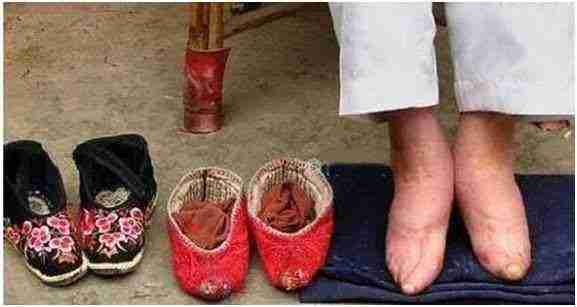
Foot binding meaning:To increase girls’ marriage prospects, and also it was considered a rite of passage. Others argue that it started out as a fashionable impulse and an expression of one’s identity.
How Does Foot Binding Work?
This barbaric act practiced on girls aged 4-6 (or 3-12 years) started with the feet being plunged in hot water and the toenails clipped, massaged, and oiled. Next, the toes were broken and bound against the sole into a triangular shape – all except the big toes. This resulted in a strained arch, and then the feet were bent into doubled and bound with silk strips. The wrappings were removed briefly every 2 days to prevent infection. And in some cases, excess flesh was cut off or even encouraged to rot. To speed up the process, the girls had to walk long distances, and the wrappings often tightened as they were forced into smaller shoes. The process took 2 years, and left a deep cleft that would fit a coin.